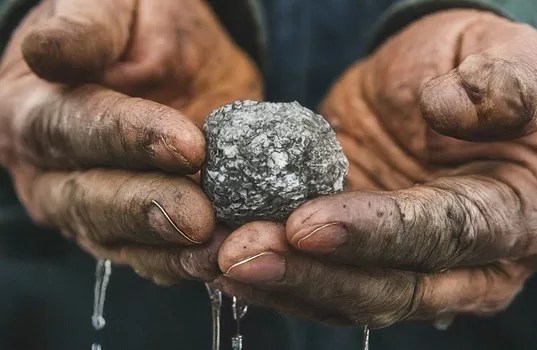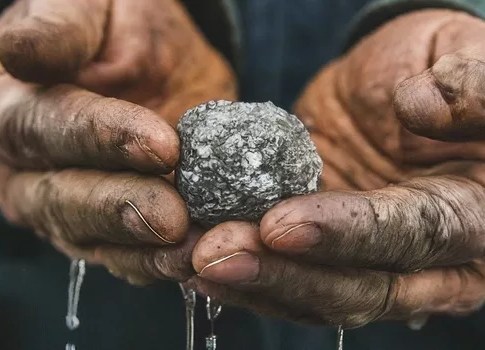Diamonds have long been symbols of love, wealth, and status. Their sparkle adorns engagement rings, necklaces, and crowns. However, behind the glittering facade lies a dark reality that has plagued the diamond industry for decades—blood diamonds.
These are diamonds mined in war zones and sold to finance armed conflict against governments. Also known as conflict diamonds, their trade has led to human rights abuses, environmental destruction, and prolonged wars.
Our story on Blood and Conflict Diamonds continues after this advertisement:
The Origin of Blood Diamonds
The term “blood diamonds” gained prominence in the late 1990s during brutal civil wars in African countries such as Sierra Leone, Angola, and the Democratic Republic of Congo.
Rebel groups in these regions seized diamond mines and used the proceeds from diamond sales to fund their military campaigns. The human cost was staggering, with millions of people displaced, maimed, or killed.
Human Rights Violations
The atrocities associated with blood diamonds are harrowing. Forced labor, child labor, and horrific working conditions are rampant in conflict diamond mines.
In Sierra Leone, rebels amputated limbs and forced civilians, including children, to mine diamonds under the threat of death. These diamonds were then sold to fund weapons and ammunition, perpetuating a vicious cycle of violence.
Environmental Impact
Mining for diamonds, particularly in war-torn regions, also takes a significant toll on the environment. The extraction process often involves clear-cutting forests, diverting rivers, and causing soil erosion.
These activities lead to the destruction of ecosystems, loss of biodiversity, and contamination of water sources with hazardous chemicals like mercury and cyanide.
The Kimberley Process Certification Scheme (KPCS)
In response to the global outcry against blood diamonds, the international community established the Kimberley Process Certification Scheme in 2003.
The Kimberley Process aims to prevent conflict diamonds from entering the mainstream diamond market. Member countries are required to certify that their diamond exports are conflict-free and to track diamonds from the mine to the market.
While the Kimberley Process has made strides in reducing the flow of blood diamonds, it has faced criticism for its limitations.
Critics argue that the certification process can be easily circumvented, and the definition of conflict diamonds is too narrow, excluding diamonds associated with other forms of human rights abuses and environmental harm.
Ethical Alternatives
Consumers today are increasingly aware of the ethical implications of their purchases, and the diamond industry has seen a rise in demand for conflict-free and ethically sourced diamonds.
Some alternatives include:
- Lab-Grown Diamonds: These diamonds are created in laboratories using advanced technology that replicates the natural diamond formation process. They are virtually identical to mined diamonds but come without the ethical and environmental baggage.
- Fair Trade Diamonds: These diamonds are mined and sold under strict labor and environmental standards. Fair trade certification ensures that miners receive fair wages, work in safe conditions, and that mining practices do not harm the environment.
- Recycled Diamonds: Vintage or recycled diamonds are another ethical choice. By choosing a recycled diamond, you avoid contributing to new mining activities altogether.
The story of blood diamonds is a stark reminder of the darker side of the luxury industry. While strides have been made to address the issue, it is crucial for consumers to remain vigilant and informed.
By choosing ethically sourced diamonds and supporting initiatives that promote fair trade and environmental sustainability, we can help ensure that the sparkle of our jewelry does not come at the cost of human suffering and environmental destruction.
Take Action
If you are in the market for a diamond, ask your jeweler about the origins of their diamonds and look for certification from reputable sources. By making conscious choices, you can contribute to a more ethical and sustainable diamond industry.
By understanding the true cost of blood diamonds, we can all play a part in creating a world where beauty and ethics go hand in hand.
From Amazon
Blood Diamonds Paperback, 2012 by Greg Campbell
Blood and Diamonds: Germany’s Imperial Ambitions in Africa Hardcover, 2021 by Steven Press
Laws and Regulations on Blood Diamonds Across the Globe
Europe
In Europe, the regulation of blood diamonds is primarily guided by the Kimberley Process Certification Scheme (KPCS), which the European Union (EU) adheres to rigorously.
The Kimberley Process requires member countries to certify that their diamond exports are conflict-free. Specifically, the EU implements the Kimberley Process through Council Regulation (EC) No 2368/2002, which prohibits the import and export of rough diamonds unless accompanied by a Kimberley Process certificate.
After Brexit, the United Kingdom continues to adhere to the Kimberley Process independently, ensuring all rough diamonds imported or exported are certified as conflict-free.
Asia
In Asia, major diamond trading countries like India, China, and the United Arab Emirates (UAE) are active participants in the Kimberley Process.
India, being a significant player in the diamond industry, ensures compliance with the Kimberley Process through the Gem and Jewellery Export Promotion Council.
In China, the Ministry of Commerce is responsible for implementing and monitoring the certification scheme.
The UAE, home to major diamond trading hubs, regulates diamond trade through the Dubai Multi Commodities Centre (DMCC), which ensures adherence to the Kimberley Process.
United States
The United States addresses the issue of blood diamonds through the Clean Diamond Trade Act (CDTA), enacted in 2003. This act prohibits the importation of rough diamonds into the U.S. from countries that are not participants in the Kimberley Process.
Enforcement of this law falls under the U.S. Customs and Border Protection (CBP). Additionally, the Kimberley Process Implementation Act grants the President the authority to enforce the Kimberley Process within the U.S., ensuring that only conflict-free diamonds enter the American market.
Canada
Canada enforces the Kimberley Process through the Export and Import of Rough Diamonds Act (EIRDA), enacted in 2002. This legislation requires that all rough diamonds exported from or imported into Canada be accompanied by a Kimberley Process certificate.
The Canadian Diamond Code of Conduct, a voluntary initiative, encourages diamond sellers to provide consumers with information about the ethical sourcing of diamonds, thereby promoting transparency and consumer confidence.
Oceania
In Oceania, both Australia and New Zealand are participants in the Kimberley Process. Australia ensures compliance with the Kimberley Process Certification Scheme through the Department of Industry, Science, Energy and Resources.
New Zealand implements and monitors the scheme through the Ministry of Foreign Affairs and Trade. These efforts aim to prevent the trade in conflict diamonds and ensure that the diamond industry in these countries adheres to ethical standards.
The Kimberley Process Certification Scheme serves as the cornerstone of global efforts to combat the trade in blood diamonds. Each region, from Europe and Asia to the Americas and Oceania, has its own mechanisms for implementing and enforcing the Kimberley Process.
Despite variations in implementation, the common objective remains to ensure that diamond trading does not finance conflict or contribute to human rights abuses.
By adhering to these laws and regulations, countries aim to maintain ethical standards in the diamond industry, promoting transparency and accountability.
From Amazon
Blood Diamonds Paperback, 2012 by Greg Campbell
Blood and Diamonds: Germany’s Imperial Ambitions in Africa Hardcover, 2021 by Steven Press

Related stories
Exploring the World of Man-Made Created Diamonds
World’s most exquisite pink diamonds at Melbourne Museum
Williamson Pink Star – Pure pink diamond sets auction record
FBI Top Ten Art Crimes, FBI Art Crimes Team – Updated
Colonel Blood’s plot to pinch the British Crown Jewels
Stolen Crown Jewels from the Royal Palace Dresden
The story of the NSW Rum Corp, Holey Dollar and Dump coins
Collecting 1937 & 1938 Australian Crown coins
Top 10 Rare Valuable and Collectible Vinyl Records
The Top 20 rarest and most valuable U.S. coins
What to collect in Barbershop Memorabilia




